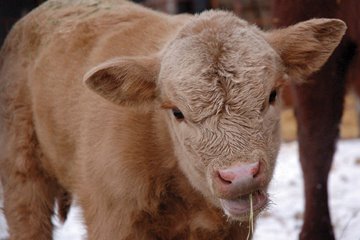
by Karen Emilson
Normally when the sun is shining in the summer time, cattle producers don’t stand around talking about the weather, they take advantage of it.
But this year producers trying to make hay in parts of the Interlake, Eddystone, north of Dauphin and on the west side of Lake Manitoba have been kept out of the fields due to abnormally high and frequent rainfalls. The ground has been saturated since June, making it near impossible to get onto the fields to make hay.
Producers from some of the hardest hit areas met with Manitoba Agriculture Minister, Rosann Wowchuk and her staff two weekends ago to hear their concerns over how they are going to feed their cows this winter.Minister Wowchuk told producers at Ashern that the provincial government will set up a program similar to the one in 2003 that would pay freight costs to either bring in hay or ship cattle out of the area for feeding.
The response from producers was lukewarm; they made it clear that while freight assistance is of some help, it will not fix the most pressing issue - five years of low prices and increasing production costs have eroded their equity. Many said that if they don’t have enough feed this winter, they will be forced to sell cows.
They outlined the following problems with a freight-only program:
* Lack of capital to purchase hay.
* Difficulties finding hay since the problem is widespread.
* Hay prices skyrocket during a shortage. It is not economically feasible to feed a cow $60 per bale of hay.
* Their investment in land, equipment and input costs means they have already paid for the hay left standing in the fields, so will be paying for it twice over.
* Tax implications if they are forced to sell cows this fall.
Many said that selling is their only option; and for some that would mean their herds would be reduced to one half or a third of the current size.
They also asked that the program be extended to include:
* feed supplements to improve the quality of marginal hay and straw.
* that the program be also cover the cost to bring in straw and other feed grains.
* that there be funding available to help producers with drowned-out forages re-establish that crop next spring.
They also asked the Department to speak to their counterparts at the Federal level to see if there would be tax relief for those forced into selling off all or part of the herd because of lack of feed.


No comments:
Post a Comment